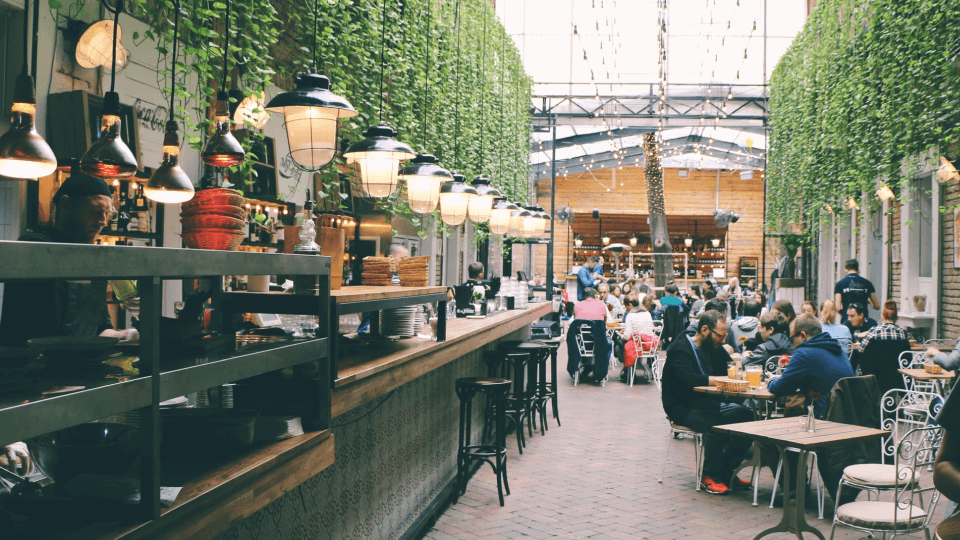14 Mar The right POS-terminal can be a good investment
Hotel & Restaurant operation
The right POS-terminal can be a good investment

As a business operator in the restaurant industry, you must have a POS-terminal, as it is a necessity to be able to run a business and accept payment. We know that many restaurateurs only perceive their POS system as just a payment system, and they miss out on all the good functions and options that a good POS system offers.
We will therefore focus here on how you can get the most out of your POS system and its functions, so that the system, instead of just being an expense, can be considered a good investment that gives your restaurant great value.
Spend money on a POS system
“You need to spend money to make money”.
It is at least valid if you want to turn your POS system into an income. Because if you don’t spend money on a good POS-terminal, you won’t get the features that make the system a good investment either. That’s why you don’t have to save too much when you need to find your POS-terminal.
How does the POS-terminal become a good investment?
It may seem incomprehensible that a POS-terminal, which is basically a necessary expense, can turn into a good investment – but it actually can.
A good POS-terminal contains a multitude of useful functions designed to optimize your business – e.g. by automating manual processes. At the same time, the good POS-terminal gives you the opportunity to integrate with the external systems, which also contribute to a further optimization of your restaurant’s workflows and processes.
We will now go over some of the functions and integrations that we know add great value to your restaurant.
Your own take away platform
A good checkout system offers the option of setting up your own take away page. Many restaurants sell their take away via third-party platforms, which typically take a very high commission for the distribution – up to 30%! As it looks right now, third-party platforms are difficult to avoid if you have ambitions to sell a lot of take away. However, the use of these platforms can well be supplemented with alternative measures.
It is clear that for restaurants there is great value in being exposed on these takeaway platforms. However, it also has an inappropriately high price, and several restaurateurs find that their profit is significantly reduced. Here, the establishment of your own take away site via your POS supplier can be a good supplement.
The take away function gives customers the opportunity to order take away directly from your restaurant’s website, and the order is then automatically registered at the POS-terminal and sent to the kitchen. Here you can advantageously consider a POS supplier that offers a take away site for a small, fixed and monthly amount. It naturally gives the great benefit that no commission has to be paid for the orders that go through our own site.
This can save a lot of money if the restaurateur manages to get some of his customers to order via their own site rather than third-party platforms. Here, some kind of incentive measures can be advantageously considered, so that customers would rather use your take away site than a third-party platform. It could, for example, be offering something extra, having slightly cheaper prices or the like.
Optimize your purchases and reduce food waste with intelligent product ordering
It is expensive for you to throw away food and drinks, but it is also expensive to buy too little.
We know that many restaurateurs understandably find it difficult to assess how much is expected to be sold and thus how much needs to be bought in. This results in many restaurateurs operating with an excessively large buffer stock, should more guests arrive than one’s gut feeling says. Unfortunately, this all too often results in restaurateurs having to throw out an inappropriate amount of food – neither for the benefit of the environment or the bottom line.
It is precisely here that intelligent product ordering comes into the picture. Roughly speaking, the system works in the way that with a single entry, the system calculates exactly how much must be bought home of each individual raw material. The restaurateur enters the expected sales budget for the desired period for which goods are to be ordered. The system then calculates very precisely how much of each raw material must be ordered home in order to reach the given turnover compared to the current stock status. This results in restaurateurs no longer having to operate with too large buffer stocks that ultimately end up being thrown away, and at the same time they do not have to fear that they will run out.
Thus, there is potentially a lot of money to be saved by choosing a POS supplier that offers the function of intelligent product ordering, as the amount of food waste is minimized and significantly fewer staff hours are used to order products.
Get more time for good service – and guests will come back
Precisely the use of fewer staff hours is one of the very big benefits that a good POS-terminal provides. It contains a lot of different functions that are intended to automate manual processes in the restaurant and facilitate workflows. This has the effect that your employees get more time to spend on what really matters: providing your guests with good service.
Use of handheld terminal to receive orders directly at the table
By choosing a POS system that offers handheld terminals for receiving orders, you provide your employees on the floor with great value. With these terminals, the waiter can take orders directly at the table, and the food order then goes directly to the kitchen and the drink order directly to the bar. This eliminates the need for the waiter to take orders at the table and then have to go up to the till and put in the order. It saves your employees from a lot of duplication of work, while it frees up the time that the employees previously spent commuting between the table and the cash register, which can instead be used to provide good service to your guests.
Self-service solutions
In recent years, various forms of self-service solutions have gained more and more traction in the restaurant industry. Among the most well-known and used are the self-service screens that are typically seen in fast food restaurants. Here, guests have the opportunity to place their order themselves and adapt it to their own wishes and subsequently complete payment. This means that the guest only has to be served when he needs his food. However, it is not the optimal solution for traditional restaurants, but luckily there are alternatives.
Especially the self-service solution, where the guest via QR code and/or an app on their own phone, enjoys great popularity among restaurants and guests. It typically works in the way that guests scan a QR code with their phone and then gain access to the restaurant’s digital menu card, where they can place their order, which is then sent directly into the POS system.
It helps that the waiters have more time to provide a good service, and at the same time it prevents the guests from sitting and waiting to get in touch with a busy waiter in order to complete their order. It works in almost the same way as if the guest were to order take away.
Integration to accounting system
As previously mentioned, with a good checkout system there is also the possibility of integrating the system with external systems, all of which give your restaurant extra value. There can e.g. be it about table booking, finances, roster planning and salary systems.
All of these systems offer you good value, but as the systems are obviously not free to use, an additional cost is imposed. This additional cost is almost always very well spent, but we have learned that the possibility of integrating your POS-terminal into your accounting system is where the greatest value is created for the restaurateur.
Here, your sales are transferred directly from your POS-terminal to your accounts with just a few clicks. It is therefore easier than ever to book your sales, and you therefore save a lot of time by not having to do the bookkeeping manually – and at the same time significantly minimize the risk of errors.
There are more integration options than we have dealt with here, and we encourage you to explore which integrations can add value to your particular restaurant. If you e.g. spends a lot of time managing table plans, you might want to consider integrating your POS system with a table booking system such as DinnerBooking, easyTableBooking or BookEtBord.
Group solution – for you with several businesses
As a small extra bonus for those restaurants that have more than one store, a good POS system also offers the option of connecting an HQ module – but typically for a small fee. The HQ module gives you a total overview of all your businesses, and it also ensures that if changes are to be made to the menu (e.g. if you are working with seasonal menus, the burger of the month or similar), it is possible to change it for all the stores at once, instead of having to change it for each store.
This is therefore not applicable to restaurants of all types and sizes, but only makes sense if you have at least 2 businesses.
What does it require of you?
If you want to make your POS system a good investment, there are some things you should pay particular attention to. But who wouldn’t want to turn a necessary expense into a good investment?
Below we have listed 3 things you must do if the POS system is to be a good investment:
- Rather pay a few hundred kroner more per month and get a POS system that contains the functions and integrations that give your restaurant great value. It will earn itself back in.
- Create an overview of which optimizing POS functions are relevant for you – there are many more than we have mentioned here. And use them!
- Find out which integrations your restaurant needs so that operations can be optimized further – for example, whether you will benefit from a table booking system.
